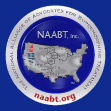 |
|
Our Veteran population is faced with many issues that make dealing with opiate
dependency even tougher in some ways than with the rest of the population.
Many Veterans are dealing with post-traumatic stress disorder (PTSD) and refractory
depression, as well as those with severe medical issues with chronic pain related to their
service. We need to address these issues. Although the Veteran’s Administration has been
there for us in the past, helping many of us to learn coping skills and offering medical care
in order for us to lead more productive lives, the issues of what used to be called “dual
diagnosis” still hinder us from achieving our goals at times.
Veterans with PTSD have a much higher rate of substance abuse problems and
depression than that of the civilian population, and Veterans who have chronic pain also
many times end up with not only a physical dependency on the medication they need to
live more normally, but a psychological and emotional dependency as well.
The good news is that Buprenorphine (Suboxone®/Subutex®) has been proven to be
extremely  effective in treating opioid dependency, and the majority of people who use
Buprenorphine also report a huge improvement in their depression
symptoms. And as it was originally developed as an analgesic, it is
effective in relieving pain. effective in treating opioid dependency, and the majority of people who use
Buprenorphine also report a huge improvement in their depression
symptoms. And as it was originally developed as an analgesic, it is
effective in relieving pain.
The bad news is that Buprenorphine, although approved for
use by the Veteran’s Administration and on the formulary, is not
being used at all VA Medical Centers and in VA substance abuse
treatment programs. This forces many of us in areas where we
cannot go to the VA for Buprenorphine treatment to have to rely
on local private physicians for treatment and counseling. The fact
that this treatment can be more expensive in the private practice
arena is especially tough on disabled Veterans, who rely only on their disability or
retirement income and cannot afford to be treated.
I urge all Veterans out there, as well as our civilian comrades, to help us change this.
Write your Congressmen and Senators; write the Veteran’s Administration. In the long run,
treatment with Buprenorphine will be less expensive for the Federal government and the
Veteran’s Administration, as well as more effective and more successful for our Veterans
who so desperately need this treatment. Veterans – Petition your local VA Medical Center
to institute a Buprenorphine treatment program if it doesn’t have one. Remember:
Veteran’s medical care and treatment is not free – we PREPAID for our benefits; and we
have a right to demand effective and cost-efficient treatment that has been proven over
and over scientifically to be the most successful, medically assisted treatment to date. We
owe it to ourselves and to our comrades to insist on the best treatment available for our
Veterans. Talk to your physician, and write today! - Jay Morgan, NAABT Member For assistance with Veteran’s issues: jgmorgan8711@adelphia.net
You may contact the Department of Veterans Affairs at: www.va.gov
Find your Congressmen and Senators: www.congress.org |
 |
| Besides the Wall Street Journal article last summer, this is the first mass exposure
article about the efficacy of Buprenorphine treatment. But more then the efficacy,
lack of diversion, and the success stories, was the manner in which this article was
written. It represents a shift in the perception of this disease. The title “New drug
treats the new face of addiction” indicates a change in the perceived demographic
of who can have an addiction disorder.
The sensationalism and colorful street language often prevalent with addiction
stories was omitted in favor of respectful and accurate medical language.
Patients were not referred to as junkies, addicts, or criminals. This article discussed
a treatment for a disease like any other effective new medication. This is a giant
step forward in overcoming the main barrier to treatment – stigma – which still
prevents many physicians from prescribing and patients from seeking treatment.
The article supports the efficacy of Buprenorphine along with patient testimonials
touting the profound life-saving effects it has had on their lives. Leading experts in
the field of addiction medicine from Yale University were quoted. The practice of
maintenance therapy was presented as mainstream treatment for a chronic
recurring disease that requires ongoing treatment. Lynn Sullivan, MD, pointed
out this shift in perception ”This is a medication not a drug”. Scott Prince, MD,
explained, “They (uncertified doctors) are afraid of that type of patient, but they
don't understand. That type of patient is in their office already.”
The article reports that since its introduction 200,000 people have taken Suboxone
of the estimated 3.5 million people addicted to prescription opioids or heroin. (<6%)
USA Today also announced collaboration with HBO that will include future articles
on cutting-edge treatments, affects of addiction on lives and communities, and a
three-hour public service special in January 2007.
The entire article can be found on our home page www.naabt.org |
|
 |
| Dr. Campana points out that the stigma
is a major deterrent for patients seeking
treatment, and showed that his patients
are not stereotypical. “There is a major
stigma with addiction among the general
public, who believe that addiction is a
character flaw or a moral weakness…
I treat individuals ranging from high profile
business owners to teachers, professionals,
housewives, high school students” he said.
The most satisfying cases that Campana has
handled to date involved several young men
he treated for heroin addiction. “They were
all very intelligent and from solid, loving
families. Yet each of them was being
consumed by heroin addiction. Their families
were devastated…” “…once these young
men started taking Suboxone, their
withdrawal symptoms and drug cravings
completely dissipated and their general sense
of wellbeing improved dramatically.” He
continued, “They are all gainfully
employed or working on advanced
educational degrees.” Drug abuse by Frank
Shatz, Jan. 28, 2006 • The Virginia Gazette |
 |
April 22 - 26, 2006, in Atlanta, Georgia.
The theme for this year’s conference is
“TREATING PEOPLE WITH DIGNITY:
Working with Criminal Justice and
Health Care Systems”.
Included among the activities are
numerous workshops, exhibits, hospitality
activities and entertainment as well as
local facility tours. As always, Saturday and
Sunday will feature a series of cutting
edge pre-conference sessions for veteran
clinicians, clinicians new to the field and
all other conference participants.
For comprehensive information,
please go to:
http://aatod.org/aatodnational.html |
 |
• Advocacy
• Pregnancy and Buprenorphine
• Results of Patient Waiting List Pilot |
 |
| All NAABT literature is available on the
naabt.org Literature page as PDF files
of literature for you to download and
view or print for your convenience. For multiple copies of NAABT
Literature, please email your request
to MakeContact@naabt.org.
The Physician Locator (Doctor/Patient
button) sorts physicians by distance in
geographic proximity, regardless of
city, town, county, or state borders.
Click here to try it for yourself.
Current Newsletters are available at the
naabt.org homepage. Past editions are
available as PDF files on our Literature
page, under Other Literature. |
|



 effective in treating opioid dependency, and the majority of people who use
Buprenorphine also report a huge improvement in their depression
symptoms. And as it was originally developed as an analgesic, it is
effective in relieving pain.
effective in treating opioid dependency, and the majority of people who use
Buprenorphine also report a huge improvement in their depression
symptoms. And as it was originally developed as an analgesic, it is
effective in relieving pain.



